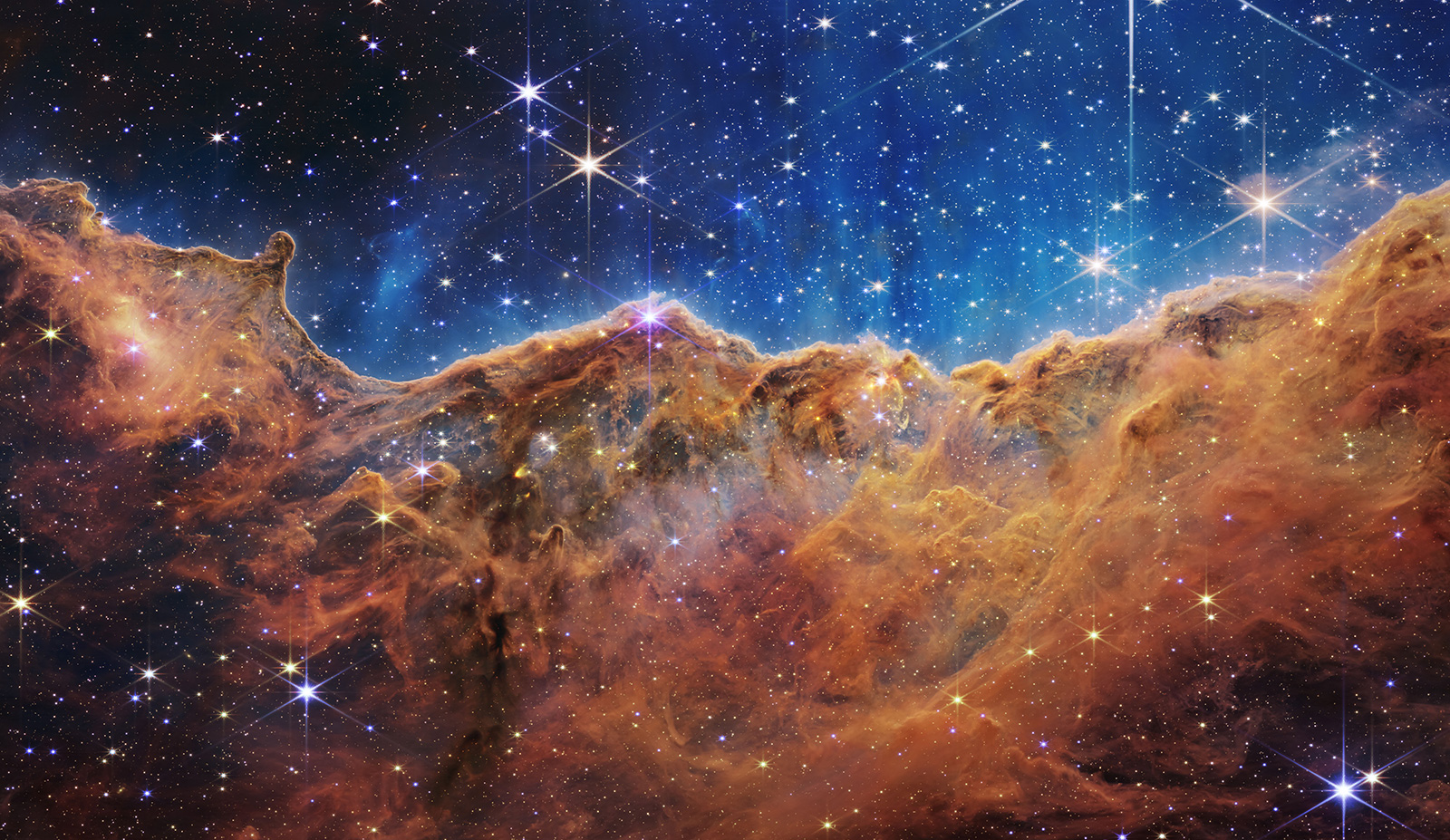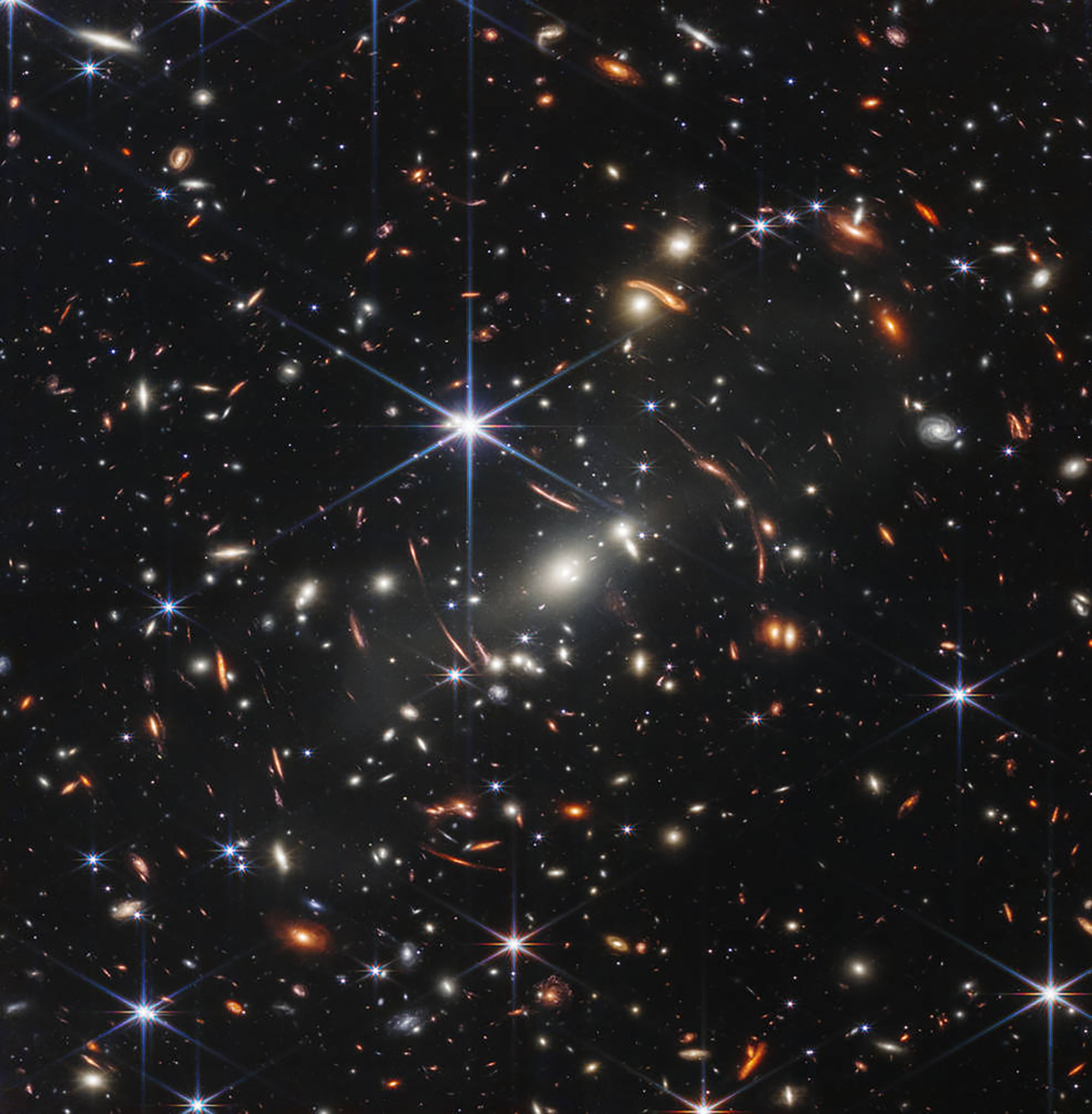JWT First images
Page 1 of 1 • Share
 JWT First images
JWT First images
New image from Webb telescope shows where stars are born
From CNN's Ashley Strickland
 This landscape of “mountains” and “valleys” speckled with glittering stars is actually the edge of a nearby, young, star-forming region called NGC 3324 in the Carina Nebula. Captured in infrared light by NASA’s new James Webb Space Telescope, this image reveals for the first time previously invisible areas of star birth. (NASA/ESA/CSA/STScI)
This landscape of “mountains” and “valleys” speckled with glittering stars is actually the edge of a nearby, young, star-forming region called NGC 3324 in the Carina Nebula. Captured in infrared light by NASA’s new James Webb Space Telescope, this image reveals for the first time previously invisible areas of star birth. (NASA/ESA/CSA/STScI)Located 7,600 light-years away, the Carina Nebula is a stellar nursery, where stars are born. It is one of the largest and brightest nebulae in the sky and home to many stars much more massive than our sun.
The “Cosmic Cliffs” are seen in the stunning new image that reveals previously hidden baby stars, which provides "a rare peek into stars in their earliest, rapid stages of formation," according to NASA.
Stephan's Quintet gives scientists a look at how galaxies interact
From CNN's Ashley Strickland
 Today, NASA’s James Webb Space Telescope reveals Stephan’s Quintet, a visual grouping of five galaxies, in a new light. This enormous mosaic is Webb’s largest image to date, covering about one-fifth of the Moon’s diameter. It contains over 150 million pixels and is constructed from almost 1,000 separate image files. The information from Webb provides new insights into how galactic interactions may have driven galaxy evolution in the early universe. (NASA/ESA/CSA/STScI)
Today, NASA’s James Webb Space Telescope reveals Stephan’s Quintet, a visual grouping of five galaxies, in a new light. This enormous mosaic is Webb’s largest image to date, covering about one-fifth of the Moon’s diameter. It contains over 150 million pixels and is constructed from almost 1,000 separate image files. The information from Webb provides new insights into how galactic interactions may have driven galaxy evolution in the early universe. (NASA/ESA/CSA/STScI)The space telescope's view of Stephan's Quintet reveals the way galaxies interact with one another and how their interactions might shape galactic evolution.
This compact galaxy group, first discovered in 1787, is located 290 million light-years away in the constellation Pegasus. Four of the five galaxies in the group "are locked in a cosmic dance of repeated close encounters," according to a NASA statement.
NASA released the 1st Webb Telescope image yesterday — and more are coming today
From CNN's Ashley Strickland
 The first image from the James Webb telescope, released on Monday, July 11. (NASA/ESA/CSA/STScI)
The first image from the James Webb telescope, released on Monday, July 11. (NASA/ESA/CSA/STScI)NASA on Monday released the first image from the James Webb Space Telescope. NASA called the image "the deepest & sharpest infrared image of the early universe ever taken."
The image depicts a massive group of galaxy clusters that act as a magnifying glass for the objects behind them. Called gravitational lensing, this will create Webb's first deep field view of incredibly old and distant, faint galaxies.
The rest of the images will be released today. The series of pictures as a whole is likely to include a new look at five cosmic targets.
_________________


8DonCo
Page 1 of 1
Permissions in this forum:
You cannot reply to topics in this forum
 Home
Home